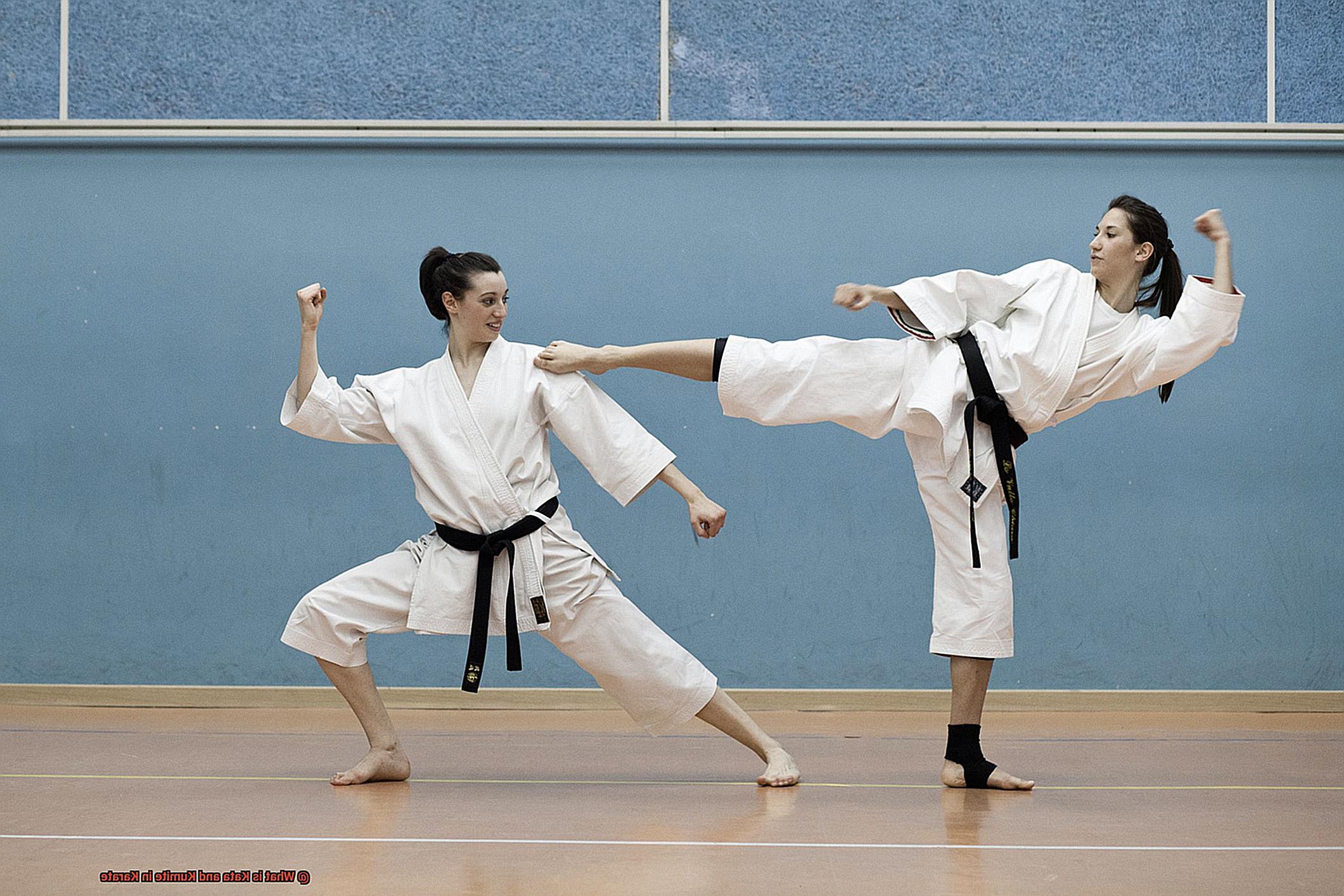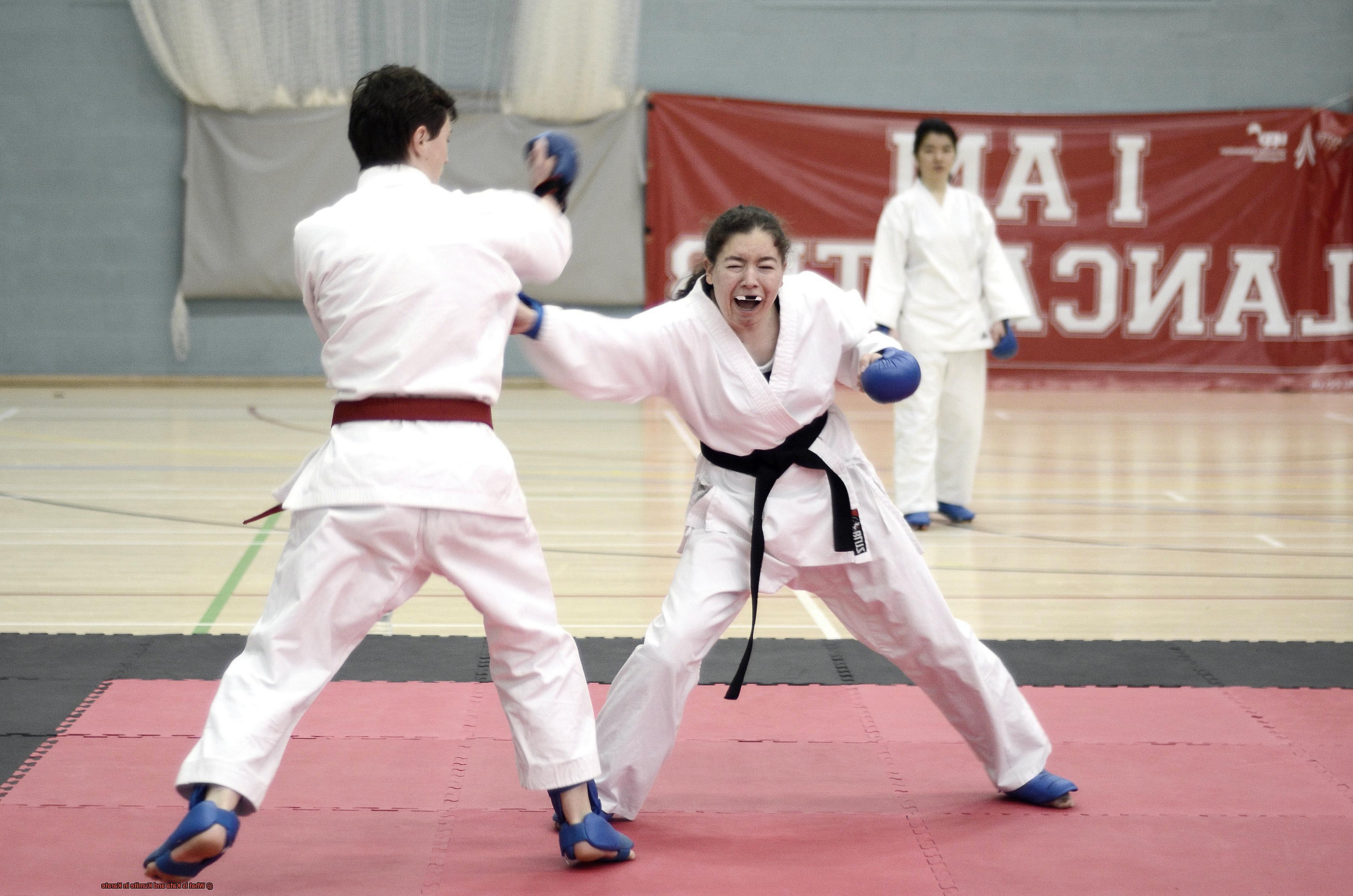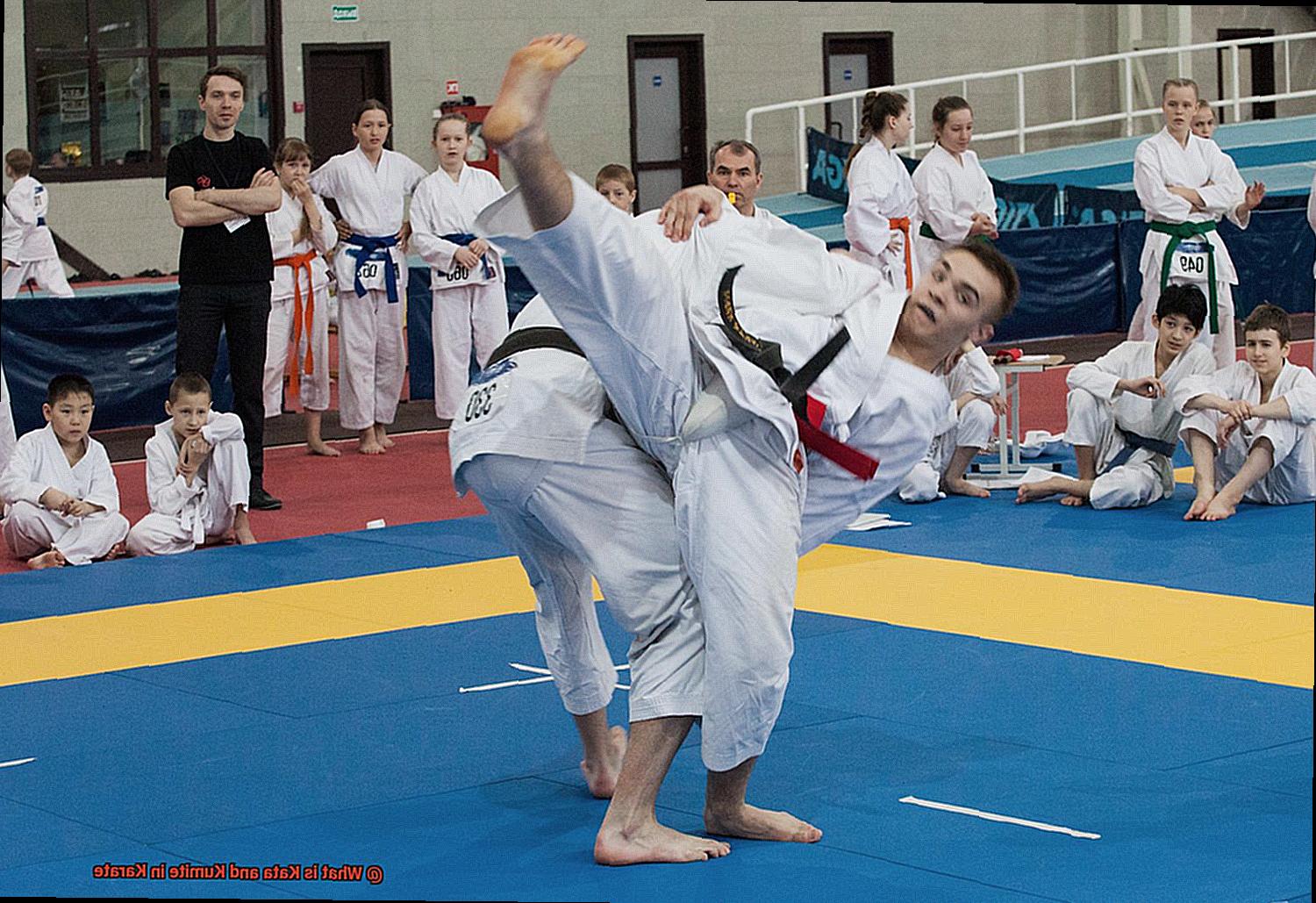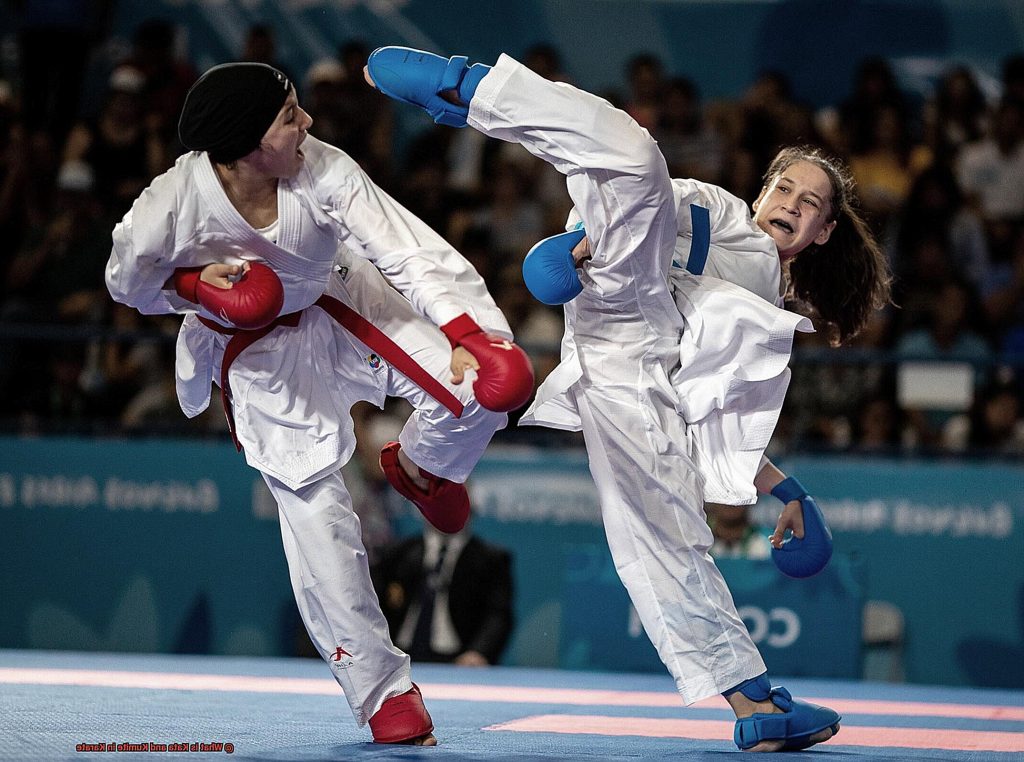To get started, you’ll need to understand the two main components of this martial art: kata and kumite. Kata is a series of prearranged movements designed to look like self-defense against an imaginary opponent.
Kumite, which translates to “grappling hands,” is a form of sparring where two people fight in a simulated combat situation.
In this blog post, we’ll explore what kata and kumite are like and how they can help you become an expert in karate. So, grab your gi, and let’s learn the basics of kata and kumite.
History of Kata and Its Origins
Kata is an ancient Japanese martial arts tradition that has been used to teach and improve martial arts skills for centuries. It involves solo movements and techniques that are performed in a predetermined sequence.
The term “kata” comes from the Japanese word “katachi,” which means “body” or “shape.” Depending on the style of Karate, Kata can be practiced with or without weapons.
Kumite is another important part of Karate training that involves two people sparring or practicing combat drills with one another.
Kumite provides students with the opportunity to practice their techniques in a realistic situation while also developing their mental strength and agility.

The main goal of Kumite is to learn how to defend oneself against an attacker while still learning how to attack an opponent effectively.
Kata and Kumite are two primary components of Karate education that help students develop their skills, increase discipline, and instill a sense of character.
Through these two methods, karate students can become competent martial artists who can defend themselves in any situation.

Kata and Kumite are both invaluable tools for mastering the art of self-defense and should not be overlooked by those wishing to hone their martial arts abilities.
How Are Katas Useful to Modern Day Karateka?
Kata is an essential part of modern karate, providing students with a way to practice their techniques and advance their skills in a controlled environment.
Not only does it help build strength and endurance, but it also improves coordination and balance.
Katas also teach important concepts such as timing, distance, and flow.
Through the repetition of kata movements, students become more aware of their body and movements, enabling them to make corrections in their technique that would otherwise be difficult to learn without the guidance of a teacher.
But there’s more to kata than just physical training; it can also act as a form of meditation.
As students focus on the physical aspects of the art, they can clear their minds and stay focused on the techniques they are learning.
This helps them understand what they are doing while still enjoying the calming effects of meditation.
So, katas are incredibly useful for modern day karateka. They provide an effective way to learn techniques while improving strength and coordination at the same time.
Plus, they act as a form of meditation that helps keep students focused on their workouts.
Different Types of Katas and Their Meaning
Kata is an essential part of karate, comprising a series of pre-determined moves that are used to train and perfect techniques. There are several types of katas, each with its own unique meaning and purpose.
Heian, or “peaceful thought,” is a great way for beginners to learn the basics, while Tekki (“iron horse”) brings more complex positions and movements. Students can practice defense against multiple attackers with Bassai (“to penetrate a fortress”), while Hangetsu (“half moon”) helps develop focus and concentration.
Jion (“temple of wisdom”) teaches proper breathing techniques, and Empi (“flying swallow”) increases agility and speed.
These katas can be used in modern-day karate as a way to learn and refine techniques as well as gain physical fitness benefits such as increased strength and flexibility.
Knowing the different types of katas and their meanings will help you find the right ones for your skill level and desired goals. So start training today—you’ll be surprised at how quickly you progress.
Japanese Kata in Competition
Competing in Japanese kata is an exhilarating way to showcase your martial arts skills. It involves a predetermined set of moves that must be performed in a specific order with accuracy and fluidity.
Competitors must also demonstrate proper technique and control while performing the kata, as judges look for correct posture, balance, timing, and power during the performance.
There are many different Japanese katas that can be used in competitions. Heian Shodan, Heian Nidan, Heian Sandan, Tekki Shodan, Bassai Dai, Jion, Kanku Dai, Empi, and more are just some of the katas seen on the competition floor.
Whether you’re competing or watching from the sidelines, it’s sure to be an exciting event.
Is a Kumite Fight like a Real Fight?
Kumite is the closest thing you can get without the worry of serious injury. Kumite is a form of martial arts sparring that simulates a fight between two opponents. It consists of three rounds and has strict rules and regulations designed to keep both competitors safe.
Unlike real fights, kumite fights have specific rules that must be followed. Punches and kicks are only allowed to the body, while head shots are prohibited. Furthermore, strikes must be pulled or stopped before contact is made with the opponent, and they must be executed with proper technique for them to count towards scoring points.
Kumite fights offer martial artists a great opportunity to practice techniques in a realistic environment without fear of harm. So if you’re looking for an exciting way to test your skills without any danger, kumite could be just what you need!
What Is Kumite in Karate?
This Japanese term, which translates to “sparring” or “grappling,” is the practice of self-defense and sparring techniques with a partner.
Whether it be free sparring, point sparring, light contact sparring, or full contact sparring, kumite is an essential part of karate training that can help you develop coordination, speed, power, timing, balance, reflexes, and accuracy.
Kumite is also beneficial for building confidence as well as physical fitness levels. It allows martial artists to test their skills against an opponent in a safe environment while simultaneously learning how to defend themselves in real-life situations.
As a student at the University of Oxford, I can personally attest to the positive effects Kumite has had on my own martial arts journey, so if you’re looking to step up your karate training, I would highly recommend giving it a try.
Benefits of Practicing Kumite
Kumite is a great way to test your martial arts skills and knowledge in a safe, controlled environment.
It can help you become more confident and comfortable in real-life fighting situations. Through kumite, you can learn how to move quickly and efficiently to defend yourself.
You will also develop better reflexes, coordination, and timing. In addition, kumite teaches you how to control your breathing while under pressure—an important skill for any martial artist.
Furthermore, you can use kumite to practice the principles of self-defense, such as proper blocking techniques and counterattacks. All in all, practicing kumite offers many benefits that every martial artist should take advantage of.
How to Prepare for a Kumite Match
Kumite is a form of sparring in karate, and it’s essential to be adequately prepared for a match if you want to succeed. Here are some helpful tips to get you ready for your next kumite match.
Physical and Mental Preparation
Physical and mental preparation are both essential components of any kumite match. To prevent injury, it’s important to warm up thoroughly and stretch before the game.
Practicing the techniques you plan to use in the match beforehand will help you become more comfortable with them and increase your chances of success.
Additionally, having knowledge of your opponent’s style and strategies will help you prepare for what they may do.
Mental preparation is also key; visualizing yourself performing well during the match can help build confidence and focus on the task at hand.
Warming Up and Stretching
A good warm-up should include dynamic stretching, which involves stretching while moving, such as walking lunges or arm circles.

This helps increase blood circulation throughout the body as well as prepare muscles for strenuous exercise.
After warming up, stretching helps reduce muscle tension and increase flexibility, so it should not be neglected.
Sparring Drills
Sparring drills are a great way to learn techniques in a controlled environment before participating in an actual match.
Depending on their level of experience, these drills involve two people learning techniques on each other without or with light contact.
Practitioners can get used to performing techniques under pressure without worrying about injury from full-contact sparring.
Visualization Techniques
Visualizing yourself executing effective strategies or attacking your opponent’s moves can give you an edge over them when it comes time for the actual kumite match.
Rehearsing movements or scenarios beforehand can also help practitioners feel more confident by allowing them to imagine themselves doing well during their matches, which can lead to improved results in real life situations.
Game Plan and Strategy Plan
Having a game plan and strategy for each match is essential if you want to win a kumite match.
Knowing what tactics you’re planning on using during the game as well as how you’ll react to your opponents’ moves will give you an advantage over them when it comes time for competition.
In addition, knowing your adversary’s style will help ensure that nothing catches you off guard during matches.
By following these tips, anyone can safely prepare for their next kumite match with confidence!
Conclusion
Karate is an ancient martial art, and kata and kumite are two of its core components.
Kata consists of pre-determined movements that mimic self-defense against an imaginary opponent, while Kumite involves two people sparring in simulated combat. Both forms help to hone self-defense skills, improve physical fitness and coordination, and build confidence.
Kata can also be used for technique study as well as a form of meditation to clear the mind.
Popular katas include Heian Shodan, Tekki Shodan, Bassai Dai, Jion, Kanku Dai, and Empi—each with their own meaning and purpose. Competitors can show off their martial arts prowess in competitions too.
Kumite is another important part of karate training that enables practitioners to try techniques in a safe environment without fear of injury.
It has specific rules and guidelines to ensure both competitors’ safety while teaching them how to move quickly and efficiently for protection—boosting confidence as well as physical fitness.
Preparation is key for any kumite match; physical and mental preparation such as stretching, researching your opponent’s style, visualizing success during the match, and having a plan are all vital elements.
Kata and Kumite are essential components of karate education that teach students how to be effective martial artists who can protect themselves in any situation.






